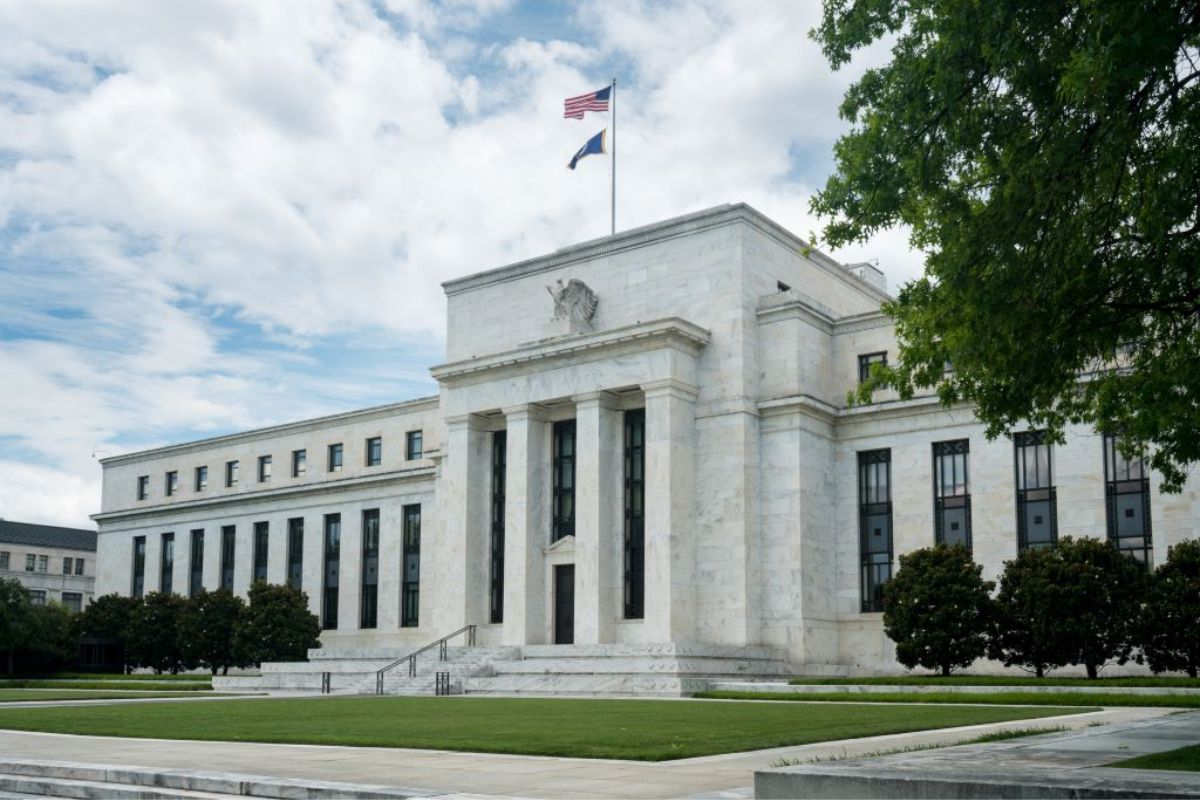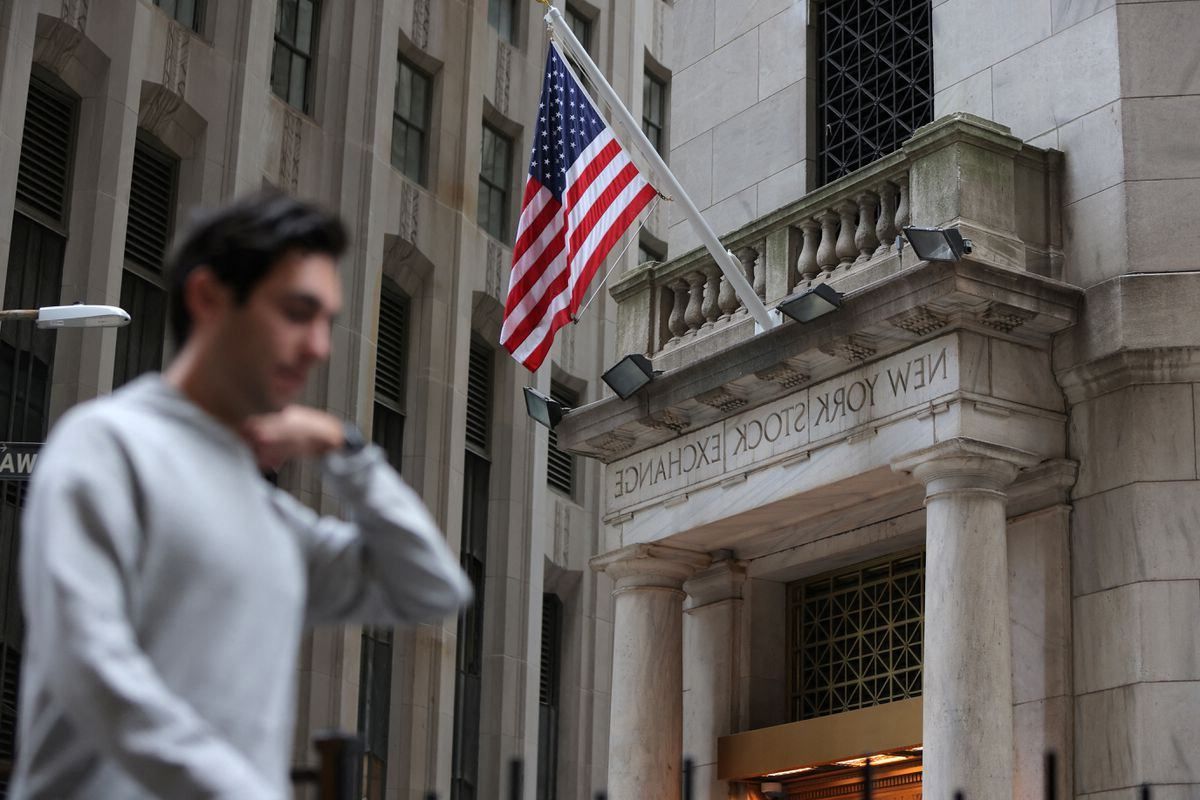Inflation Quandary: As the Federal Reserve grapples with the complex task of managing inflation in an uncertain economic environment, skepticism looms over their projections for 2024.
With speculation rife about potential interest rate cuts in the coming months, the Fed finds itself walking a tightrope between trust and verification.
The delicate balancing act involves navigating inflation expectations and making crucial rate decisions that impact the economy at large.
As we delve into the intricacies of this quandary, it becomes evident that the changing economic landscape and various factors influencing inflation dynamics add further complexity to the Fed’s decision-making process.
Additionally, concerns within the housing sector and the Fed’s communication strategies offer insights into the timing and potential impact of rate cuts.
So, how does the Fed strike the right balance in this trust-but-verify scenario?
Key Takeaways
- Analysts are skeptical about the Federal Reserve’s inflation projection for 2024, considering the current trend at 1.9% and recent data.
- The Federal Reserve may consider potential adjustments, including interest rate cuts, policy rate pause, or an increase in bond purchases, in March due to declining inflation estimates.
- The Fed must balance supporting economic growth while controlling inflation, navigating potential risks of inflation overshooting or falling below the desired target.
- Understanding and navigating various factors influencing inflation dynamics, such as population aging, government deficits, and global trade frictions, is crucial for maintaining price stability.
Federal Reserve’s Inflation Projections: Skepticism Surrounding 2024 Estimates
Analysts are skeptical about the U.S. Federal Reserve’s projection that the underlying inflation measure will reach 2.4% by the end of 2024, given the current six-month trend at 1.9%.
Also Read: Monetary Policy Watch: Taiwan Central Bank Signals More Tightening Amid Inflation Concerns
This skepticism arises from the fact that the projected inflation rate seems to be overly optimistic, considering the recent data. While the Federal Reserve may have its reasons for this projection, it is essential to approach it with caution and a sense of skepticism.
Inflation is a complex economic phenomenon influenced by various factors, including supply and demand dynamics, fiscal policies, and global economic conditions. Therefore, it is crucial to consider all these factors and evaluate whether the Federal Reserve’s projection aligns with the current economic reality.
This skepticism surrounding the inflation projections highlights the need for continuous monitoring and analysis to make informed decisions regarding interest rate adjustments.
Speculation on Interest Rate Cuts: Potential Adjustments in March Discussed
Given the ongoing skepticism surrounding the Federal Reserve‘s inflation projections, there is now speculation among market observers and analysts about potential adjustments in March, particularly regarding interest rate cuts, if inflation estimates continue to decline.
As the Fed carefully assesses the state of the economy, it faces a delicate balancing act. On one hand, it wants to support economic growth by keeping borrowing costs low. On the other hand, it must ensure that inflation remains under control and does not spiral out of hand. The table below highlights the potential adjustments the Fed could make in response to declining inflation estimates:
| Potential Adjustments | Likelihood | Impact on Economy |
|---|---|---|
| Interest rate cuts | Moderate | Stimulates borrowing and spending, but may fuel inflation if not carefully managed |
| Policy rate pause | Low | Maintains stability, but may limit economic growth |
| Increase in bond purchases | Low | Injects liquidity into the market, but may contribute to asset price inflation |
The Fed’s decision in March will depend on a thorough analysis of economic indicators and inflation data. While interest rate cuts are a possibility, the Fed will exercise caution to ensure a balanced approach that supports growth while keeping inflation in check.
Navigating the delicate balance between addressing inflation concerns and avoiding excessively low inflation poses a challenging task for the Federal Reserve. With the anticipation of an economic rebound, the Fed must carefully assess the trajectory of inflation expectations while making rate decisions.
Here are four key points to consider:
- Data analysis: The Fed needs to analyze a wide range of economic indicators, including inflation measures, employment data, and consumer spending patterns, to gauge the current state of the economy accurately.
- Forward guidance: Communicating effectively with the market is crucial. The Fed must provide transparent and consistent guidance on its inflation expectations and the potential impact on future rate decisions.
- Risk assessment: Balancing the risks of inflation overshooting or falling below the desired target requires careful evaluation of both domestic and global factors influencing inflation dynamics.
- Policy flexibility: The Fed must be prepared to adjust its policy stance swiftly if inflation expectations deviate significantly from their desired trajectory.
Changing Economic Landscape: Factors Influencing Inflation Dynamics
The changing economic landscape has brought forth various factors that significantly influence inflation dynamics. Population aging, government deficits, and global trade frictions are among the key drivers shaping the inflation landscape.
As policymakers grapple with the question of whether the world is returning to pre-pandemic norms, where a 2% inflation rate was the standard, the focus is on monitoring inflation persistence and making informed decisions in response to the evolving economic environment.
The impact of population aging on inflation is multifaceted, as it affects both the supply and demand sides of the economy. Government deficits, particularly in times of economic downturns, can stimulate inflationary pressures through increased public spending.
Lastly, global trade frictions introduce uncertainty and potential disruptions to supply chains, which can lead to higher inflation. Understanding and navigating these factors is crucial for policymakers in their quest to maintain price stability and promote sustainable economic growth.
Housing Sector Concerns and Communication Strategies: Insights into Rate Cut Timing
The concerns surrounding the housing sector and the appropriate timing for rate cuts are of utmost importance in the current economic landscape. As the Federal Reserve contemplates potential rate cuts, it must carefully consider the impact on the housing market and the broader economy.
Here are some key insights and communication strategies to consider:
- Housing sector vulnerabilities: The housing market plays a crucial role in the overall health of the economy. Any signs of weakness, such as declining home sales or slowing price growth, could be a cause for concern.
- The timing conundrum: Determining the right time for rate cuts is a delicate balancing act. Acting too soon could risk fueling excessive borrowing and speculative behavior in the housing market. On the other hand, waiting too long may lead to a sharper downturn in the housing sector.
- Clear communication is key: The Federal Reserve must effectively communicate its rationale for any rate cuts to maintain market confidence. Transparent messaging that highlights the potential risks to the housing sector and the broader economy can help manage expectations and minimize market volatility.
- Monitoring market reactions: The Fed should closely monitor how the housing market and other sectors respond to any rate cuts. This will provide valuable insights into the effectiveness of the monetary policy adjustments and help guide future decisions.
Conclusion Of Inflation Quandary
Overall, the Federal Reserve finds itself in a challenging situation as it navigates the delicate balance between managing inflation expectations and making rate decisions.
The skepticism surrounding the inflation projections for 2024 adds to the complexity of the task at hand.
Speculation on potential interest rate cuts in March further highlights the uncertainty in the economic landscape.
As the Fed continues to monitor various factors influencing inflation dynamics, particularly concerns in the housing sector, effective communication strategies will be crucial in determining the timing of rate cuts.
Our Reader’s Queries
Q1 Does the Federal Reserve System act to control inflation?
A The Federal Reserve aims to manage inflation by impacting interest rates. In instances of elevated inflation, the Federal Reserve commonly increases interest rates to decelerate economic activity and mitigate inflationary pressures.
Q2 How does the Federal Reserve contribute to inflation?
A When the Federal Reserve boosts the money supply, it can lead to inflation. Typically, when the Fed seeks to invigorate the economy by expanding the money supply, prices may rise, the stability of goods costs might be disrupted, and inflation is probable.
Q3 What does the Federal Reserve mean by inflation?
A Which we’ll define as a continuous rise in the average price level of all goods and services produced in the economy.




